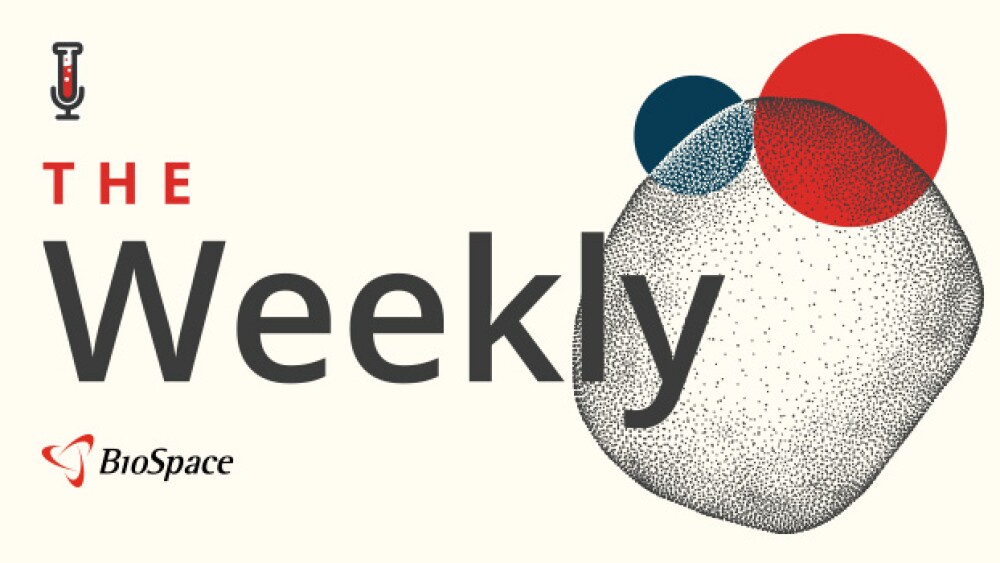While most BioSpace LinkedIn poll respondents believe the job market won’t improve until at least 2027, two industry experts are optimistic a turnaround could start sooner. They discuss early signals of recovery and challenges that remain.
There are encouraging signs that a job market turnaround is on the way, but not everyone agrees when it will happen. Two industry experts believe improvement should start in late 2026, but many biopharma professionals predict 2027 is the soonest there’ll be a shift, based on a BioSpace LinkedIn poll.
Over half of this month’s poll respondents (57%) don’t expect the market to turn around until at least 2027, up from 44% in a May LinkedIn poll. The percentage who believe a turnaround could happen by the end of 2025 dropped from 27% to 7%.
Based on BioSpace data for October, biopharma hiring activity is down year over year. There were 32% fewer average job postings live on the website last month than in October 2024. However, average jobs live rose 4% month over month, the first month-over-month increase since May.
Neither Audrey Greenberg, venture partner and chair at Mayo, nor Ira Leiderman, healthcare managing director at investment banking firm Cassel Salpeter & Co., were surprised at how many poll respondents don’t see the market turning around until 2027 or later.
“Sentiment tends to overshoot on the way down,” Greenberg told BioSpace via email. “The fundamentals suggest improvement earlier than that, but the perception lags the data.”
Early Signals of Recovery Appear But Challenges Remain
Late 2026 should be the first durable inflection point, with broader normalization in 2027, according to Greenberg. She noted there have been early signals of recovery this year, such as increased merger and acquisition volume, selective initial public offering reopenings and 35 FDA novel drug approvals.
Regarding M&A activity, the third quarter had some of the highest-value biopharma acquisitions of the year. Deals include Merck buying Verona Pharma for $10 billion, Genmab acquiring Merus for $8 billion and Pfizer nabbing Metsera for $10 billion.
As to overall financing, October was a strong month for biopharma, diagnostics and medtech businesses, according to financial transaction data compiled by UBS Equity Research. That data includes venture capital investment as well as IPO, follow-on, and seed and Series A funding. Last month, total funding hit $8.5 billion, up 87% year over year and 27% month over month. October reflected the highest monthly total since November 2021.
Greenberg noted, however, that although financing, M&A and exits are improving, especially in late-stage private rounds and strategic acquisitions, the recovery is still uneven across stages and sectors.
“By 2026, I expect those same drivers to broaden and stabilize, setting the stage for a more durable upturn in hiring and investment,” she said.
There will likely be a two-speed recovery, with growth in cell and gene therapy, immunology and radiopharma by late 2026 while earlier-stage platform companies may stay cautious into 2027, according to Greenberg. Regarding jobs, she said, “Hiring will likely return in waves with the first in manufacturing, analytics, and regulatory roles and then later in R&D and platform expansion once capital flows fully normalize.”
Leiderman expects the job market to turn around after the midterm elections in 2026 but noted the turnaround will take time due to the damage being done to the biopharma industry.
“It’s not like flipping a switch,” he told BioSpace.
As an example of the damage, Leiderman noted how upheaval at the FDA, where more than 3,500 employees lost their jobs, has affected drug approvals. Products are still getting approved, he said, but the FDA is missing deadlines.
Notable delays have included missed target decision dates for Novavax’s next-generation COVID-19 vaccine, GSK’s chronic obstructive pulmonary disease expansion for Nucala and Stealth BioTherapeutics’ Barth Syndrome treatment.
As was the case when BioSpace interviewed Leiderman earlier this year, he said that for the job market to turn around, there needs to be more predictability at the FDA, as the unpredictability affects how a company’s senior management operates.
“You’ve got to do a fair amount of planning, and if you’re adding variables like not knowing the timeline for approval because the traditional timelines have been ignored in cases, how do you know how much money you need to keep the lights on, to keep programs going?” he said.
You’ve got to do a fair amount of planning, and if you’re adding variables like not knowing the timeline for approval because the traditional timelines have been ignored in cases, how do you know how much money you need to keep the lights on, to keep programs going?
More investment is also important to a job market turnaround, according to Leiderman. Like Greenberg, he mentioned there have been positive developments in that area this year, pointing to fresh capital coming in. However, he added, earlier-stage businesses are still having a hard time.
“Investors will have to get comfortable,” Leiderman said. “They need to manage their own risk, and if they think it’s too risky, they’re going to stay on the sidelines or just invest in more mature, more developed companies where the risk is less.”
3 Structural Changes to Accelerate the Turnaround
Beyond M&A and investment, Greenberg noted that three structural changes could accelerate the job market turnaround:
- Artificial intelligence–enabled regulatory modernization where FDA pilots in digital twins and model validation will shorten timelines, which directly drives hiring
- Reshoring of biomanufacturing, which is resulting in a new employment wave in chemistry, manufacturing and controls (CMC), engineering and quality control
- Health-economic discipline for companies, as businesses that demonstrate real-world value and cost-effectiveness early attract capital and people
Regarding health-economic discipline, Greenberg said, “The ability to link clinical outcomes to system impact has become a strategic advantage—both for investors deciding where to place bets and for executives deciding where to hire.”
She added that in a tighter market, every new role has to connect back to value creation, whether it’s regulatory, data science or CMC. What’s striking now, according to Greenberg, is how AI, policy and health economics are starting to converge.
“As predictive models begin to inform trial design, pricing, and access, we’ll need a new mix of talent—people who understand science, data, and reimbursement in the same conversation,” she said. “That’s where the next wave of jobs will come from, and it’s why this transition period, though uncomfortable, is actually laying the groundwork for a smarter, more durable industry.”
Reasons to Stick With Biopharma
While over half biotech and pharma professionals are thinking about leaving the industry, according to a May BioSpace survey, Leiderman said he hopes they stick with it. He also acknowledged that it’s a tough situation for the unemployed. That group includes the many biotech and pharma professionals who’ve experienced layoffs this year. According to BioSpace tallies, biopharmas this year have let go or projected they’ll let go of over 37,000 employees.
“People have to pay bills. They have to pay a mortgage,” Leiderman said. “And, you know, there’s a limit to how much pain people are going to take.”
Greenberg suggested that instead of leaving the industry, biopharma professionals pivot within it. She noted that the durable opportunities are in regulatory science, CMC, quality, pharmacovigilance, market access and data-rich functions, like bioinformatics and AI analytics.
“If your expertise can translate into one of those domains, there’s no reason to leave,” she said. “The only people at risk are those unwilling to adapt their skills to how this industry is evolving.”
Want more job market insights? Subscribe to Career Insider to receive our quarterly life sciences job market reports, career advice and more.






